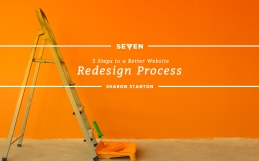By now you’ve heard it many times: responsive web design is a must for effective websites. In case you need a refresher, the simplest definition of a responsive website is one which has been built to automatically adjust its display to accommodate whatever device on which it’s being viewed (which can include a phone, tablet, or desktop.)
So, you know you need a responsive website. Now what? Follow these three steps to a responsive web design!
Step One: Make sure that you understand why responsive web design is important. More people are searching the web on mobile devices than ever before. If your site is not easy to view on a mobile device, you’re pretty much guaranteed to be losing customers. Consider John Rampton’s experience, shared here. When he used responsive web design to convert his website, he reports that his site traffic doubled, and his conversion tripled overnight. Unlike those miracle diet infomercials that caution “results not typical,” these kinds of results are not uncommon.
Step Two: You must understand what a responsive website is NOT.Responsive web design is not a cure-all. It’s only part of the puzzle. It’s critical, yes, that your website be easily viewed on mobile devices, but in order to benefit your business, it also has to perform. Make sure that your website is built (and tested!) to load quickly on any type of device a customer might be using. A customer using a mobile device to search is likely already multitasking, strapped for time, or both. If your website takes too long to load (even a couple of seconds can cost conversions), those customers will bounce! (See where that term “bounce rate” comes from?) This article explains why The New York Times caught some flack when they launched a responsive mobile app late last year. To quote Maximiliano Firtman, “If you have the budget for responsive design, you must have the budget for performance.”
Step Three: Hire a team that is well-seasoned in responsive web design. An effective responsive website displays the information that the customer cares about the most the moment they access the site. It has touch-friendly navigation, and uses icons in place of words whenever possible. This is second nature for an experienced web developer, and that is what you want. People want to access information quickly; therefore, your website needs to make it as easy as possible for them to do so!
So what do you think? Are you ready to take the next step toward a responsive website that gets you the results you are looking for? Studio 7 has a proven track record of effective responsive web design. Give us a shout and let’s have a conversation.




